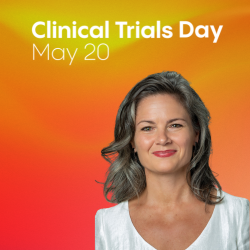Learning and achievements.
Nationwide Children’s Hospital in Columbus, Ohio, has invested more than $4 million in an intramural funding program over the last 10 years. Funded by the Abigail Wexner Research Institute, the program is designed to promote, support, and encourage fellows and early-level faculty in conducting clinical and translational research.
“The result of these investments in high-quality research have been very encouraging,” says Samantha Sharpe, CCRP, Senior Program Administrator, Nationwide Children’s Hospital. In 2022, 35 posters were presented based on research done under this program, 16 publications were submitted and accepted, and 52 abstracts were submitted and accepted. In 2021, 16 scientific publications were attributed to this investment, with 28 fellows, residents, and faculty presenting their results at more than 35 professional meetings. Many fellows and faculty have also secured external grant funding based to their intramural projects.
“One of our awardees recently received a National Institutes of Health training award based on data generated through this program,” states Sharpe. “One of our nurse scientists, who earned an intramural grant in 2017, has continued to publish work related to that project, with a total of eight primary papers and several offshoots to date. This represents a very solid academic return on investment.”
“Our program mirrors the National Institutes of Health’s research grant submission process, training our fellows and faculty on this process without the ‘heavy lift’ of actually applying to NIH,” notes Sharpe. “Funding their projects supports research based on clinical observations, ultimately helping to deliver better patient outcomes.”
The program has three pillars, explains Sharpe:
- Application: The overall application process is modeled on the NIH funding mechanism and scoring system, helping train and prepare our fellows and faculty to apply successfully to major government funding programs. The application must include scientific aims, background data, a project timeline, biosketches, and a budget.
- Review: Applications are peer reviewed by internal faculty members, providing an opportunity for these individuals to build reviewing skills and strengthen their own grant-writing by learning which approaches are effective.
- Post-award management: During this period, the successful applicant’s skills develop as they learn to bring their research ideas to life. Support is provided with oversight of projects to ensure that budget is well used and deliverables are met, including recruiting research participants. Return on investment metrics are gathered to support the business case for future funding of the program.
As Sharpe explains, eligible projects include a variety patient-oriented research. Examples are: mechanisms of human disease therapeutic interventions, clinical trials, development of new technologies, epidemiologic and behavioral studies, outcomes and health services research, and medical education research. Successful applicants are required to make one presentation at a Nationwide Children’s Hospital seminar, and submit twice-yearly progress reports and a final report on the research. This holds participants accountable for academic dissemination and generally helps build their careers.
Science Fair for Physicians (the AMC Perspective)
Join Samantha at ACRP 2023 [April 28 – May 1; Dallas, TX], where she will share practical tactics on how to develop a funding program that builds better researchers and kickstarts research careers. View complete schedule.

“We can be both agile and innovative in the way we manage this internal program, adjusting to emerging issues and trends in the field, responding to feedback from applicants, and making adjustments to meet institutional needs,” says Sharpe. “Over the years, there have been shifts in policies, procedures, and budget guidelines. During the pandemic, we issued special calls for proposals and worked to accelerated timelines. The academic and scientific return on investment remains high and continues to grow year over year.”
“Our program is unique within our institution, but not in the field – others can replicate or adapt these approaches to meet their own goals,” adds Sharpe. “The bedrock of science is to share learnings, and I would welcome interactions with others doing similar work, so that we can learn from one another.”
Author: Jill Dawson



